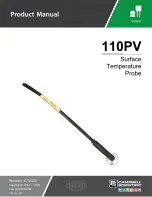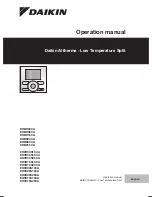
4
1. The sensor has a removable back plate. Using your thumb, press
edge of the sensor body and pull the body
away from the back plate.
2. Mount the back plate to the wall surface in
plate that mate with standard electrical box
the sensor using double sided tape or Vel-
cro® (not supplied).
3. Once the back plate has been secured, align
the two top alignment tabs on the back plate with the temperature
clicks in place.
Linking the Temperature Sensor to a Receiver
This process requires the controller or receiver to be mounted and pow-
ered and within range of the temperature sensor to be linked.
The sensor is a solar powered device that absorbs energy through a so-
lar panel storing it for use during low light periods. Before assigning the
sensor to a receiver/controller, the device must be exposed to a good
1. Remove the sensor from the back plate by pressing in on the tab on
the lower edge and pulling away from the back plate.
2.
the receiver, if necessary refer to
3. Press the temperature sensors Link
4.
-
ceiver.


























